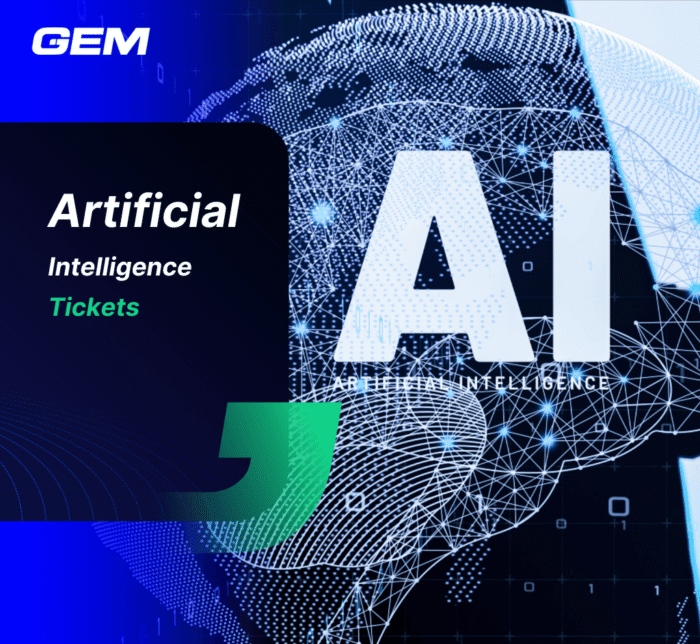Contents
Learning how dynamic machine learning applications pave the way for unprecedented speed and innovation in our day-to-day life.
Getting to know machine learning
As a subset of artificial intelligence, machine learning (ML) is the science of training and enhancing the performances of computers by feeding them data. A machine learning algorithm can provide output for users without the need for explicit instructions.
From a concept that seems to only exist in science fiction, ML has proven its dynamic role across industries. It is incorporated into machines and systems almost everywhere. Machine learning applications continuously provide solutions to scaling and upgrading operations, as well as realizing better life quality.
What are the major machine learning applications?
Here are ten prominent applications of machine learning that represent a tremendous advancement in how technology helps us process information faster and make informed decisions.
1. Real-time chatbots/ Virtual assistant
This function allows people to converse with machines and order them to follow human requests. Previous generations of chatbots used to follow established scripts that base the machine’s subsequent actions on keywords. However, with the help of machine learning, or more specifically, natural language processing, chatbots are becoming smarter and more interactive. They understand humans better, have more natural responses and also handle our requests more skillfully.
![10 powerful machine learning applications to drive modernization and innovation [2024 Update] 1 A man using the virtual assistant - one of the popular machine learning applications - on his phone to work.](https://gem-corp.tech/wp-content/uploads/2023/05/linkedin-sales-solutions-wXZV6hwN7gQ-unsplash-1-1.jpg)
In business, virtual assistant reverses the traditional “calling system” in which a brand would reach out to their customers and ask questions. Nowadays, companies actively listen to their customers’ requests via medium channels such as websites or mobile applications and make suitable changes.
Another improvement is speed. Keeping a concerned client waiting will negatively impact a brand’s effort to retain customers. Interactive machine learning applications such as chatbots would enable businesses to have split-second reactions to inquiries.
From a broader perspective, smart virtual assistants will become increasingly common in our life. Their ability to analyze personal data, understand voice requests and perform daily tasks will be improved constantly to adapt to users’ changing needs.
2. Facial recognition
Facial recognition is one popular application of Computer vision that uses machine learning to interpret, understand, and derive information from given visuals.
Like other machine learning applications, facial recognition is seen in many daily activities. From unlocking smart devices to identifying criminals, facial recognition is the keyword.
There are various different techniques in use, such as the generalized matching face detection method and the adaptive regional blend matching method. But in general, facial recognition largely depends on different nodal points on a human face. First, it finds faces in the visual input (an image or a video feed). Then, it identifies the person’s facial features, such as their nose, eyes, and mouth, creating “face encodings.” Afterward, the system compares these variables to faces that it has had images of to verify the person’s identity.
![10 powerful machine learning applications to drive modernization and innovation [2024 Update] 2 a diagram how the mechanism of facial recognition](https://gem-corp.tech/wp-content/uploads/2021/08/computer-vision.png)
3. Transportation and Commuting
Defining the most efficient route and predicting potential disruptions are crucial to a smooth, well-behaved transportation system. To keep up with the rapid development of transportation systems, many have proposed machine learning applications that view the roads as an “information highway.” This means that transportation systems will generate data, while ML will be employed to process them and come up with solutions. With the ability to analyze data to find out trends and patterns, ML-based analytics will determine the best possible route based on locations, travel history, records of accidents or traffic jams, etc.
![10 powerful machine learning applications to drive modernization and innovation [2024 Update] 3 a phone screen demonstrating the use of a machine-learning-powered navigation solution](https://gem-corp.tech/wp-content/uploads/2023/05/henry-perks-BJXAxQ1L7dI-unsplash-1.jpg)
These machine learning applications help people get directions, book a taxi, or order food. For businesses, machine learning offers assistance in their back-office operations and optimizes profitability. When handling a large number of orders, a transportation company will need ML technology to automatically process, classify, and find the best delivery routes for them. It has been proven that in the transportation industry, ML-driven solutions have a higher return on investment compared to conventional ones.
Applying ML into transportation management implies substantial benefits, namely reducing traffic jams, improving safety, mitigating delays, optimizing energy usage, enhancing transportation efficiency, and so on.
4. Email filtering and Malware detection
Spam emails and malware will gradually become harder to detect, while rule-based filtering algorithms fail to catch up with this increasing complexity. Modern machine learning applications ensure that these protective mechanisms are continuously updated and refreshed to catch up.
A commonly used algorithm to filter spam emails is Naïve Bayes. In this model, a probability is calculated based on knowledge of factors usually associated with it. For instance, if the content of an email contains the word “money,” the chance of it being spam is higher.
![10 powerful machine learning applications to drive modernization and innovation [2024 Update] 4 a model of the Bayesian spam classifier](https://gem-corp.tech/wp-content/uploads/2021/08/Email-Spam-detection.png)
As the filters continue to analyze more emails and receive more user feedback, they will generate new rules based on what they have learned. The accuracy can be as high as 99,9%.
Similarly, machine learning applications will look at a representative dataset and conclude which features are statistically relevant to malicious and benign items. This training phase will help it “understand” the underlying principle – or coding patterns – of malware and apply it to previously unseen samples. ML-based malware detectors can detect new malware with a 2-10% variation.
5. Grammar checking
Natural Language Processing (NLP), one of many machine learning applications, trains a computer to analyze, comprehend, manipulate, and even generate human language. The documents to be handled by NLP can range from online product/company reviews, social media comments, survey responses, or medical, financial, and legal records.
![10 powerful machine learning applications to drive modernization and innovation [2024 Update] 5 a graph showing the growing revenues from NLP market](https://gem-corp.tech/wp-content/uploads/2021/08/NLP-global-market.jpg)
The most common use case of NLP is grammar checking. ML-based models will learn from an annotated corpus, then use that knowledge to perform statistical analysis, looking for and correcting grammatical errors in a given text.
Besides grammar, machine learning applications evaluate the text’s clarity, suggest synonyms and expressions, or conduct a plagiarism check. As a result, they have become a powerful tool for authors, editors, and language learners.
For businesses, NLP-based machine learning applications have a distinct role in documenting and reporting, which are among the most time-consuming tasks. NLP techniques identify crucial details and formulate data entry, thus allowing the conversion of unstructured text information into reports.
For example, doing market research with NLP results in faster and more insightful outcomes. An ML-based system, in coordination with sentiment analysis, scans social media reviews/comments and picks out the most frequent words and phrases from both positive and negative ones. Such information is crucial to understanding the demands and opinions of consumers.
6. Machine translation
Instead of looking up words manually in a dictionary, language translation has been transformed by machine learning applications. These tools can convert a large volume of text input into the target language almost instantly – something that would have been very challenging if performed traditionally.
![10 powerful machine learning applications to drive modernization and innovation [2024 Update] 6 a diagram showing the history of machine translation - one of many machine learning applications](https://cdn-media-1.freecodecamp.org/images/l6Av1jJRcgtfL5n9vEvrspxpEJJalwHAusRx)
Machine translation mostly uses statistical methods known as Statistical Machine Translation (SMT). It estimates the best possible translation for a given word based on the meaning of surrounding ones.
These machine learning applications are especially necessary in a globalized world, where businesses and individuals seek solutions to break the language barrier. Many companies have released their translation tools. Meanwhile, social media platforms now provide an open-source approach, meaning users can see the translation of a particular post placed right next to it. Beyond text-to-text translation, such machine learning applications can now perform speech-to-text, speech-to-speech, etc., with enhanced clarity and naturality.
7. Recommendation system
With E-commerce becoming a sensation in the modern world, a hyper-personalized recommendation system will bring greater revenue for businesses and better consumer experiences.
Machine learning applications enhance the system’s ability to process data points and suggest products specifically for that customer. These elements include past purchases, page views, and demographic traits. The company can display alternative choices if a product is unavailable to keep the customer engaged or related products to increase their potential spending.
Meanwhile, end-users benefit enormously from such powerful recommendation engines. Machine learning applications present the products and services they need precisely, ranging from clothes, footwear, and equipment to digital products such as videos and TV shows.
A brand that is particularly successful with its recommendation system is Netflix. The company’s ML-powered engine allows them to optimize the customer’s viewing experience with highly personalized content, which both prompts new subscriptions and enhances customer retention.
![10 powerful machine learning applications to drive modernization and innovation [2024 Update] 7 a screen showing netflix which has recommendation engines](https://gem-corp.tech/wp-content/uploads/2021/08/modern-device-with-netflix-app.jpg)
8. Anomaly detection
This technique identifies an unusual point or pattern that does not comply with the ordinary behavior in a provided data set.
Anomalies can be categorized as:
- Point anomalies: A single input that is different from the others. An abnormally large transaction may indicate a potential credit card fraud.
- Contextual anomalies: Whether or not a data point is considered an anomaly is context-specific. For example, in a factory, machines often perform at a high rate during working hours. However, heightened machinery activity during other times of the day is unusual and would be alarmed.
- Collective anomalies: In this case, several data inputs point to a potential anomaly. For instance, an unusually active social media account that spreads a malicious URL address to other users may be considered a cyber-criminal. As a result, it may be deactivated to prevent further damage.
![10 powerful machine learning applications to drive modernization and innovation [2024 Update] 8 a diagram of real time anomaly detection](https://www.xenonstack.com/hubfs/Imported_Blog_Media/xenonstack-real-time-anomaly-detection-services-3-1-1.png)
Machine learning applications that specialize in anomaly detection prevent fraud and wastage across verticals”, such as:”
- Telecom: Service disruptions and roaming abuse
- Banking: Abnormally high spending or deposits and cyber intrusions
- Healthcare: Frauds or mistakes in claims and payments
- Manufacturing: Unusual machine activities
- Social media: Account cloning or bots that generate fake traffic
9. Predictive analysis
Based on a historical dataset, ML-based prediction models make guesses about the possibility of an outcome. It may be the likelihood of customer churn in the next few months or how susceptible a current data infrastructure is to cyber-attacks.
ML-based models are capable of working with large data sets in an unbiased manner. Therefore, they can provide insights that human analysts may not have and make more accurate predictions. With its assistance, business owners and administrators can make crucial decisions that imply tangible benefits – time-saving and operational efficiency, to name a few.
A bank can employ these machine learning applications to build a predictive model for debtor risk. The model will need large data sets of previous debtors, including their age, occupation, income, etc., to base its predictions on. Each time the system finishes with an answer, it can save the calculations made in the process as new input to improve future outcomes.
![10 powerful machine learning applications to drive modernization and innovation [2024 Update] 9 Predicting debtor risk with ML-driven predictive analytics](https://gem-corp.tech/wp-content/uploads/2021/08/predictive-analysis.png)
In agriculture, machine learning applications act as a decision-support tool that helps farmers with crop management by analyzing climate, energy, water resources, etc. Meanwhile, business executives can rely on ML-based predictive analytics to anticipate trends and future problems.
Additionally, ML-based predictive algorithms allow governments and enterprises to test and refresh their security infrastructure. By interpreting data on previous network threats, penetration history, server logs, etc., they can monitor and warn about incoming threats in real-time.
10. Context-aware applications
Simply put, context-awareness is the ability of devices to sense the environment they are in and accordingly adapt their behavior. A typical example to demonstrate this feature is how our smartphones can adjust screen brightness based on ambient light to ensure optimal readability. From a more general perspective, context-aware machine learning applications deliver drastically improved user experience. In any specific situation, they will figure out and meet precisely the user’s needs.
![10 powerful machine learning applications to drive modernization and innovation [2024 Update] 10 context-aware machine learning applications](https://www.outsystems.com/blog/posts/context-awareness/-/media/Images/Blog/Archive/2017/03/context_aware_1?h=389&w=590)
Input variables that such apps will receive, analyze, and react properly include location, time, activity, and environment.
A widely known example of such machine learning applications is health monitors. Users will receive a warning if their heartbeats or body temperature are unusual. Another interesting one is mobile multimedia devices provided at museums and archaeological sites to replace audio or human guides. Combined with real-time navigation, users will be guided to artifacts or exhibits that will most likely attract them based on their previous interactions and route.
In the future, this type of machine learning applications will be even more context-sensitive, while improving inter-connectivity leads to better coordination among devices. The outcomes will increase in sophistication as applications can predict user needs and automate actions to ensure a seamless experience.
Closing thoughts
Machine learning applications are actively promoting an innovation-oriented approach to performing tasks. For companies and brands, integrating this technology promises tangible business benefits and an enormous competitive advantage in the marketplace. For individuals, machine learning applications imply a modern lifestyle with optimal comfort and efficiency. Consequently, technology empowers people to make progress and achieve greater success consistently.
Create innovation-driven values today
In an increasingly competitive business landscape, machine learning is one of the major tools to help you make big leaps and stand out.
With 10+ years of experience in tailoring advanced solutions for businesses and organizations and in-depth tech knowledge, GEM’s experts are ready 24/7 to hear your story and find out how we can help.
Reach out to them via the form below.
Error: Contact form not found.






